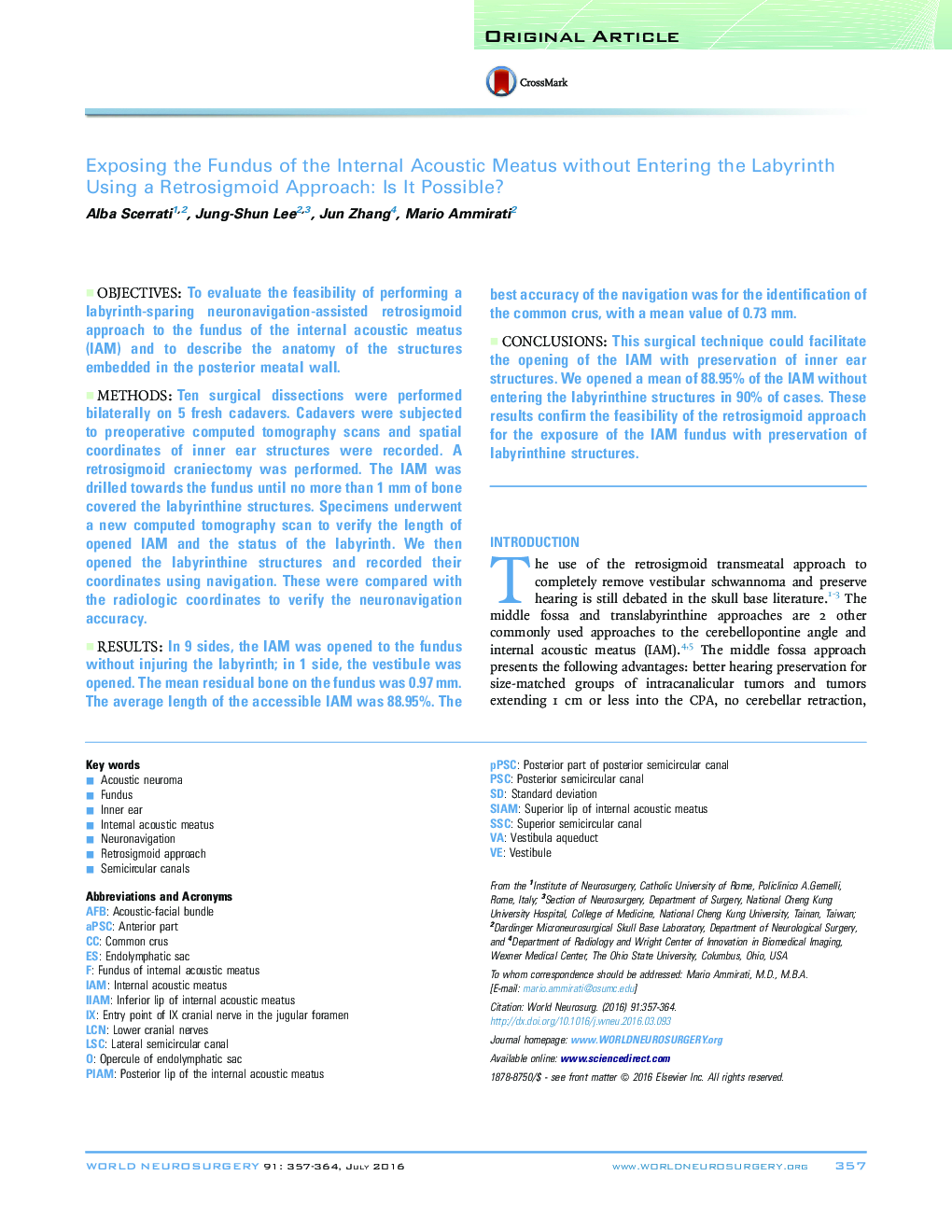| Article ID | Journal | Published Year | Pages | File Type |
|---|---|---|---|---|
| 3094558 | World Neurosurgery | 2016 | 8 Pages |
ObjectivesTo evaluate the feasibility of performing a labyrinth-sparing neuronavigation-assisted retrosigmoid approach to the fundus of the internal acoustic meatus (IAM) and to describe the anatomy of the structures embedded in the posterior meatal wall.MethodsTen surgical dissections were performed bilaterally on 5 fresh cadavers. Cadavers were subjected to preoperative computed tomography scans and spatial coordinates of inner ear structures were recorded. A retrosigmoid craniectomy was performed. The IAM was drilled towards the fundus until no more than 1 mm of bone covered the labyrinthine structures. Specimens underwent a new computed tomography scan to verify the length of opened IAM and the status of the labyrinth. We then opened the labyrinthine structures and recorded their coordinates using navigation. These were compared with the radiologic coordinates to verify the neuronavigation accuracy.ResultsIn 9 sides, the IAM was opened to the fundus without injuring the labyrinth; in 1 side, the vestibule was opened. The mean residual bone on the fundus was 0.97 mm. The average length of the accessible IAM was 88.95%. The best accuracy of the navigation was for the identification of the common crus, with a mean value of 0.73 mm.ConclusionsThis surgical technique could facilitate the opening of the IAM with preservation of inner ear structures. We opened a mean of 88.95% of the IAM without entering the labyrinthine structures in 90% of cases. These results confirm the feasibility of the retrosigmoid approach for the exposure of the IAM fundus with preservation of labyrinthine structures.
